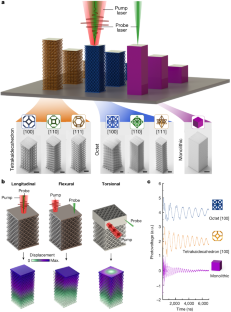2023-11-16 カリフォルニア大学サンタバーバラ校(UCSB)
◆彼女は、湖の栄養が不足している水域が過去を垣間見せてくれる良い窓であると述べました。研究は、有機硫黄化合物がこの生物地球化学サイクルで果たす役割に焦点を当て、古代の微生物が硫酸を得る方法に新しい視点を提供しています。
◆スーペリア湖の硫酸レベルが最も高い層で硫酸還元の遺伝子を持つ微生物を発見し、有機硫黄のうち特にスルホリピッドがサイクルの主要な供給源であることを確認しました。このサイクルは独創的であり、有機硫黄が微生物コミュニティのエネルギー源としてだけでなく、水酸化硫黄の最終的な収容源として機能することが示唆されています。
<関連情報>
- https://news.ucsb.edu/2023/021271/research-lake-superior-reveals-how-sulfur-might-have-cycled-earths-ancient-oceans
- https://aslopubs.onlinelibrary.wiley.com/doi/full/10.1002/lno.12454
低硫酸塩のスペリオル湖における有機硫黄の供給源から吸収源へ Organic sulfur from source to sink in low-sulfate Lake Superior
Alexandra A. Phillips, Imanol Ulloa, Emily Hyde, Julia Agnich, Lewis Sharpnack, Katherine G. O’Malley, Samuel M. Webb, Kathryn M. Schreiner, Cody S. Sheik, Sergei Katsev, Morgan Reed Raven
Limnology and Oceanography Published: 09 November 2023
DOI:https://doi.org/10.1002/lno.12454

Abstract
Organic sulfur plays a crucial role in the biogeochemistry of aquatic sediments, especially in low sulfate (< 500 μM) environments like freshwater lakes and the Earth’s early oceans. To better understand organic sulfur cycling in these systems, we followed organic sulfur in the sulfate-poor (< 40 μM) iron-rich (30–80 μM) sediments of Lake Superior from source to sink. We identified microbial populations with shotgun metagenomic sequencing and characterized geochemical species in porewater and solid phases. In anoxic sediments, we found an active sulfur cycle fueled primarily by oxidized organic sulfur. Sediment incubations indicated a microbial capacity to hydrolyze sulfonates, sulfate esters, and sulfonic acids to sulfate. Gene abundances for dissimilatory sulfate reduction (dsrAB) increased with depth and coincided with sulfide maxima. Despite these indicators of sulfide formation, sulfide concentrations remain low (< 40 nM) due to both pyritization and organic matter sulfurization. Immediately below the oxycline, pyrite accounted for 13% of total sedimentary sulfur. Both free and intact lipids in this same interval accumulated disulfides, indicating rapid sulfurization even at low concentrations of sulfide. Our investigation revealed a new model of sulfur cycling in a low-sulfate environment that likely extends to other modern lakes and possibly the ancient ocean, with organic sulfur both fueling sulfate reduction and consuming the resultant sulfide.



